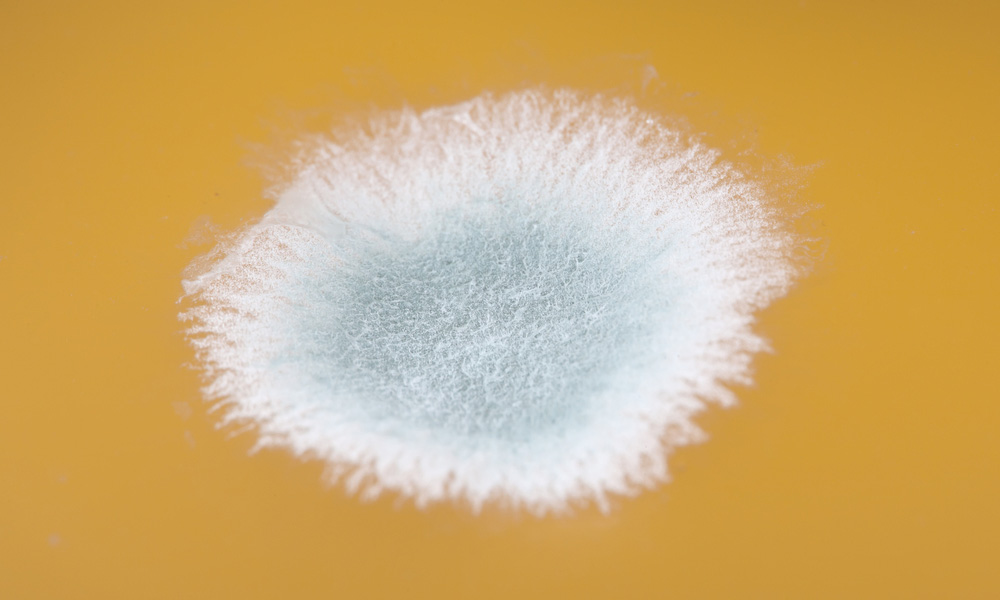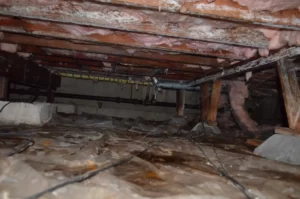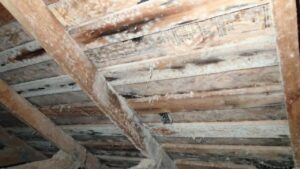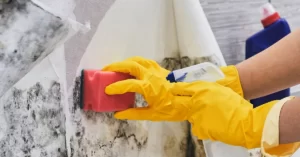
White Mold – Is It Dangerous?
White mold can spread across almost any surface and feed off both wood and drywall, often appearing in damp environments like basements, showers, attics or crawl spaces where dehumidifiers cannot reduce humidity levels effectively.
They may appear powdery in texture and blend in seamlessly with its environment. It may consist of multiple fungal species like Aspergillus or Penicillium.
The Dangers of White Mold
Just like any form of mold, white mold produces mycotoxins which can harm both humans and properties alike. White mold often appears as a powdery fungus which spreads rapidly. Common locations for its presence include attics, crawl spaces, and basements in addition to wet locations that harbor humidity where it feeds on wood or drywall material.
White mold poses serious health concerns for your family if left untreated, including respiratory tract irritation and various symptoms such as sneezing, skin rash and more in sensitive individuals. Exposure can also lead to neurological effects like memory loss and concentration issues over time.
Mold can be hard to eradicate. While most forms can be clean away easily with soap and water, white mold requires much more effort for effective removal; its roots often penetrate drywall and wood surfaces where it grows, which puts both structural integrity and safety at risk.
Symptoms of White Mold
White mold can be found growing on various surfaces such as an attic rafter, floor joists in a basement, wooden furniture and more. When present on wood surfaces it often eats away at its surface causing extensive damage that compromises the underlying structural integrity of properties.
White mold differs from its more visible black counterpart in that its powdery appearance makes it readily visible on surfaces like brick, concrete, stone, stucco or any other. Although white mold may not always be easily distinguishable from efflorescence – which forms when water seeps through concrete materials – efflorescence should never be mistaken as white mold because its symptoms can sometimes resemble those found therein.
No matter the color, mold can wreak havoc on health in numerous ways. Exposure can result in headaches, nausea, dizziness and respiratory infections as well as long-term consequences such as memory loss or depression; for this reason it is imperative to address any type of mold as soon as it appears in your home.
Causes of White Mold
Black mold may get all of the attention, but also be consider a serious health threat. Longer exposure to mold can have detrimental health effects for all family members including eye irritation, sneezing, skin rashes and runny nose as well as respiratory conditions like pneumonia and respiratory disease.
Scrubbing the area should remove mold growth and help keep it at bay, but if your problem involves porous materials like wood, drywall or carpeting it requires stronger solutions such as bleach or quaternary ammonium compounds used by mold remediation companies.
Moisture build-up in the home is often the source of growth, whether from leaks, flooding, or high humidity levels. To reduce risk and mitigate its potential adverse impacts, inspecting regularly for signs of damage caused by leaks, flooding and high humidity levels is key to mitigating growth. Dehumidifiers should also be install where high humidity occurs such as basements.
White mold growth can also result from improper maintenance and drying of wood surfaces such as attic rafters, floor joists in a crawl space and wooden furniture. Regularly cleaning, scrubbing and sanitizing these surfaces will prevent further growth.
Treatment of White Mold
White mold can be hard to detect due to its powdery texture. Additionally, it’s often mistaken for efflorescence – a fluffy crystalline structure found on concrete and other masonry surfaces – which dissolves when misted with water; but mold growth remains in its place despite such misting effort. A trained mold inspector should be able to tell which is which based on surface material.
Though most types of mold aren’t harmful, certain species can lead to various adverse health conditions. Mycotoxins release by mold may lead to neurological damage that is absorb through skin contact or respiratory systems; additional health impacts include respiratory issues, skin rashes and allergic reactions.

Mold spores can quickly fill the air in damp or humid areas, such as basements or crawlspaces. To minimize mold growth and maintain good ventilation in these spaces, the key is regular inspection for signs of water damage or humidity levels that need adjusting – and keeping these under control.
Crawlspaces are often an ideal environment for flourish in homes, as they typically lack adequate ventilation and may become waterlogged due to leaky pipes or damaged gutters. To prevent white mold growth in a crawlspace it’s essential to identify its source – including fixing cracks in foundation walls and replacing leaky roof vents as soon as possible – in order to address its source and address moisture build-up through fixes like crack repair, roof vent repair and foundation wall sealing.




